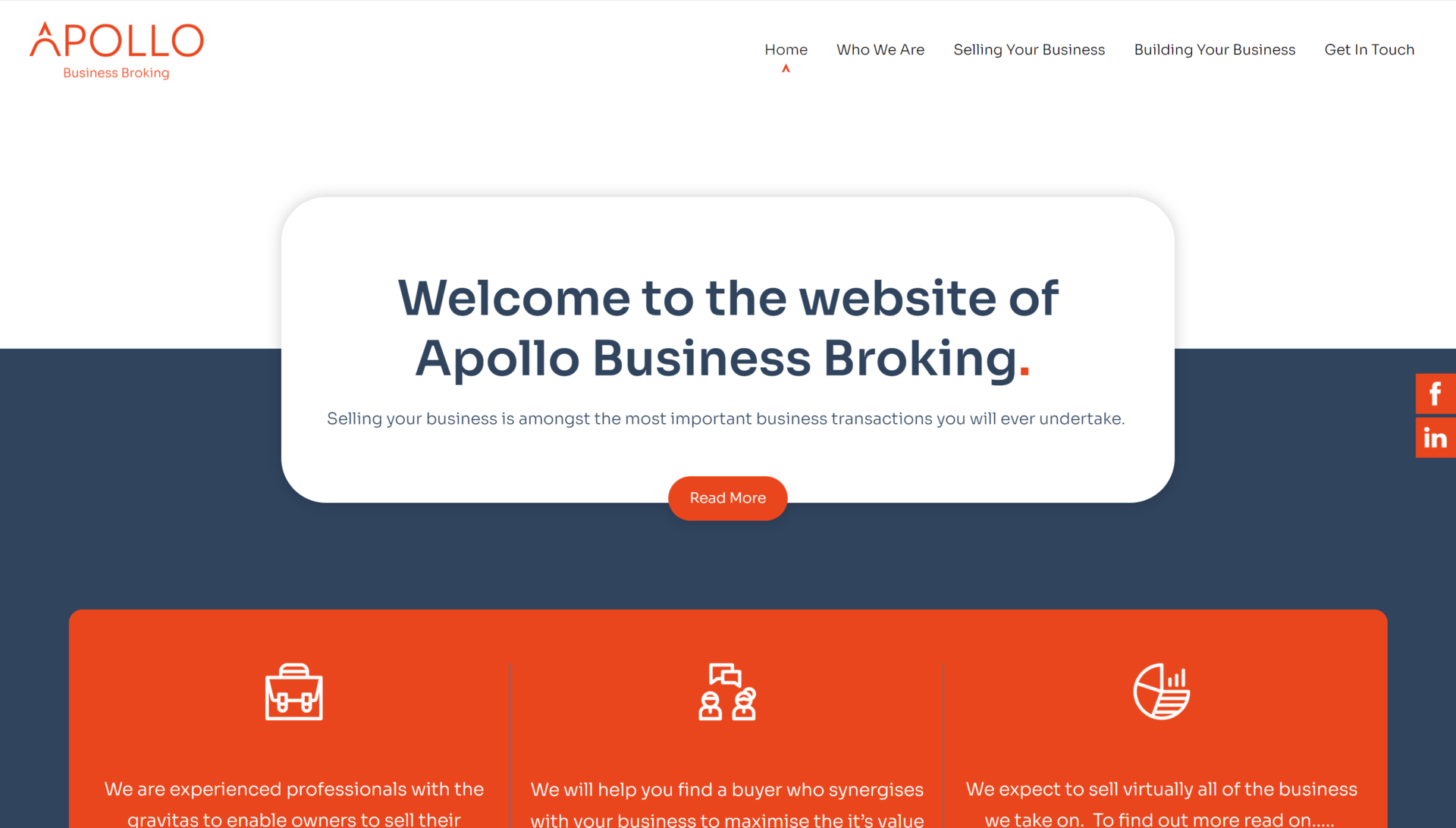The Secret Six of web design
Posted on 16th November 2022
When people think about having a new website built, there’s a tendency to focus on design and development. Successful web design isn’t exactly a dark art. But, like most things marketing-related, there are right and wrong ways to go about it (with a potential raft of financial and reputational consequences if you get it wrong!).
In this article, it’seeze Nottingham uncovers six web design ‘must haves’ that every small business needs to know. Let’s take a look at our Secret Six.
Obviously, these are crucial. But the quality of your written content is no less important than the visual and technical aspects of your site – if not more so in some respects, such as getting your SEO right.
1. A clear purpose: what is your website FOR?
That might sound like a strange question. But you’d be surprised how many business owners can’t answer it when we ask them during initial web design meetings! A typical response tends to be ‘To make money’ or ‘To get me to number one on Google’. All well and good, but not very helpful for the web designer.
A better approach is to think in terms of what you want your prospects and customers to do with, or in response to, the information on the site. The answer(s) will help to define your website’s actual purpose, which will inform both its design and its required functionality. Examples include:
Buy your products online (e-commerce)
Get in touch with an enquiry
Request a quotation
Find out more about your company
Decide whether to use your services
Look at examples of your work.
Another key purpose for most websites is to help your business rank well on all the major search engines. But it’s important to remember that in the majority of cases, SEO is a lot more important to you than it is to the customer. Which leads us to our next point.
2. Customer-centric, purpose-led design
Who are your target audience and what do they want / expect from your website? That’s the main question to answer here – and it goes hand in hand with our first point. The advice we always give at it’seeze Nottingham is to make sure your design reflects your brand’s personality and the nature of the products or services you provide.
For example, if your company specialises in low-cost products aimed at the budget-conscious consumer, it doesn’t make sense to invest in a fancy design. Keep it simple to tie in with the ‘nuts and bolts’ ethos of your product offering. For higher end products and services, however, a premium look and feel is a ‘must’. That means investing in a bespoke, one-of-a-kind design and commissioning your own graphics and photography, rather than buying a generic template and set of stock images.
Whether you’re going for value, mid-range or high end, there are several web design essentials that all new sites should include to give users the best possible experience (they’ll also help boost your Google rankings). These include:
Mobile responsiveness. An absolute ‘must’, (a) because most people browse the web on mobile devices and (b) because Google prioritises the indexing of mobile websites over desktop versions.
Site security and safe browsing. Make sure your new site has an SSL certificate, so the URL starts with https:// not http://. This means any personal or payment information entered into the site is securely encrypted.
Avoiding intrusive interstitials. This means reducing or eliminating features such as pop-ups that block some or all of the content the user is trying to look at. (Where these are needed, e.g. for accepting or declining cookies, use banners that don’t obstruct the main area of the page.)
For more information on how to optimise your website for user experience and search engine rankings, check out Google’s Page Experience guidance.
3. The right tone of voice
This is all about the written content on your website and making sure it resonates with your target audience. You may already have a tone of voice for your brand but if not, now’s the time to decide on one. Again, this should be informed by what your customers will expect to find on your website and the nature of your products and services.
For example, an expensive law firm looking to attract big corporates would probably go for a formal, serious tone of voice to reflect this. They would probably avoid contractions such as ‘it’s’ or ‘that’s’ and might refer to themselves and their clients in the third person, e.g. ‘the company’ and ‘the client.’
On the other hand, a small beauty salon with a local customer base would probably adopt a friendly, conversational tone of voice. They’d use ‘I’ or ‘we’ to talk about themselves and address their website visitor as ‘you’. Informal language and even slang would be acceptable for this type of business.
When it comes to tone of voice, there’s no real ‘right or wrong’ provided it fits with your brand image, business type and target audience. Once you’ve decided on a tone, keep it consistent across all your written and verbal communications to build and strengthen your brand identity.
4. Appropriate imagery
We’ll already touched on stock images versus commissioning your own photography and graphics. Of course, you could also take your own photos if you have a good enough camera or smart phone. As long as the end results are in line with the overall look and feel of the site, you should be fine. Just make sure the images you use are high quality, but in low resolution format so they load quickly. And don’t ‘borrow’ images off Google or use Clip Art!
Another thing to consider is how and where you’ll use the images. If you have a static or rotating banner, for instance, you’ll need to source imagery that fits the size and shape of the banner without being distorted. For this reason, it’s always a good idea to commission a mix of portrait, landscape and panoramic images when briefing a photographer.
Thirdly, consider the ratio of images to text on each page of the website. Images are great for breaking up chunks of text and they’re indispensable if you offer highly visual products or services. But don’t overdo it, as too many images can make a page look cluttered. They can also dilute your messaging if they’re not 100% relevant to the other content on the page.
5. A content marketing strategy
A common mistake is for businesses to launch an all-singing, all-dancing website that looks great…and then just let it sit there. This will not do you any favours with Google, which expects website content to be refreshed and added to regularly.
A simple approach is to launch your website with just the core pages to start with and then add new ones to split out different products and services, and provide more information. This not only helps customers find what they’re looking for, but also enables you to focus your SEO around page-specific keywords, which helps with search engine indexing.
Setting up a blog is another way to make sure new information is regularly added to your site. It’s also great for building that all-important ‘Know, Like and Trust’ by showcasing your expertise and authority in your sector. Build on your blogging activities with regular social media activity linking back to your articles and main website pages, and you’re onto a winner. Reciprocal guest blogging is one to consider, too.
Content marketing isn’t just about the written word, however. Expand your strategy to include visual content types such as videos, podcasts and infographics. Find out which types of content, and which themes and topics, have the most appeal for your target audience and give them what they’re looking for.
6. Price it right or not at all
Whether or not to include prices on your website is a thorny subject we’ve looked at in a previous blog. Of course, the decision is yours and will also depend on the industry in which you operate and the type of products and services you offer. If you do want to publish your prices, here are our three biggest tips:
Keep your options open. Rather than fixing costs in stone, offer ballpark price ranges or give examples of hourly or daily costs that apply to specific services.
Offer a choice of packages. This can work well with clearly-defined services such as it’seeze Nottingham’s web design packages. You’ll need to be upfront about what is and isn’t included in each package to preclude any nasty surprises for the customer.
Use case studies. These give you the best of two worlds. You can provide some (vague or otherwise) information about your pricing structure whilst boosting your SEO with some well-written content at the same time. Bonus!
What happens next? Ask it’seeze Nottingham!
Of course, there’s a little more to the perfect website design than the Six Secrets we’ve talked about today.
For more advice and information on how to get the most from your new business website, ask it’seeze Nottingham to help. Give us a call on 0115 777 3001 or fill in our quick callback form and we’ll get back to you ASAP.
Tagged as: Web Design
Share this post:



